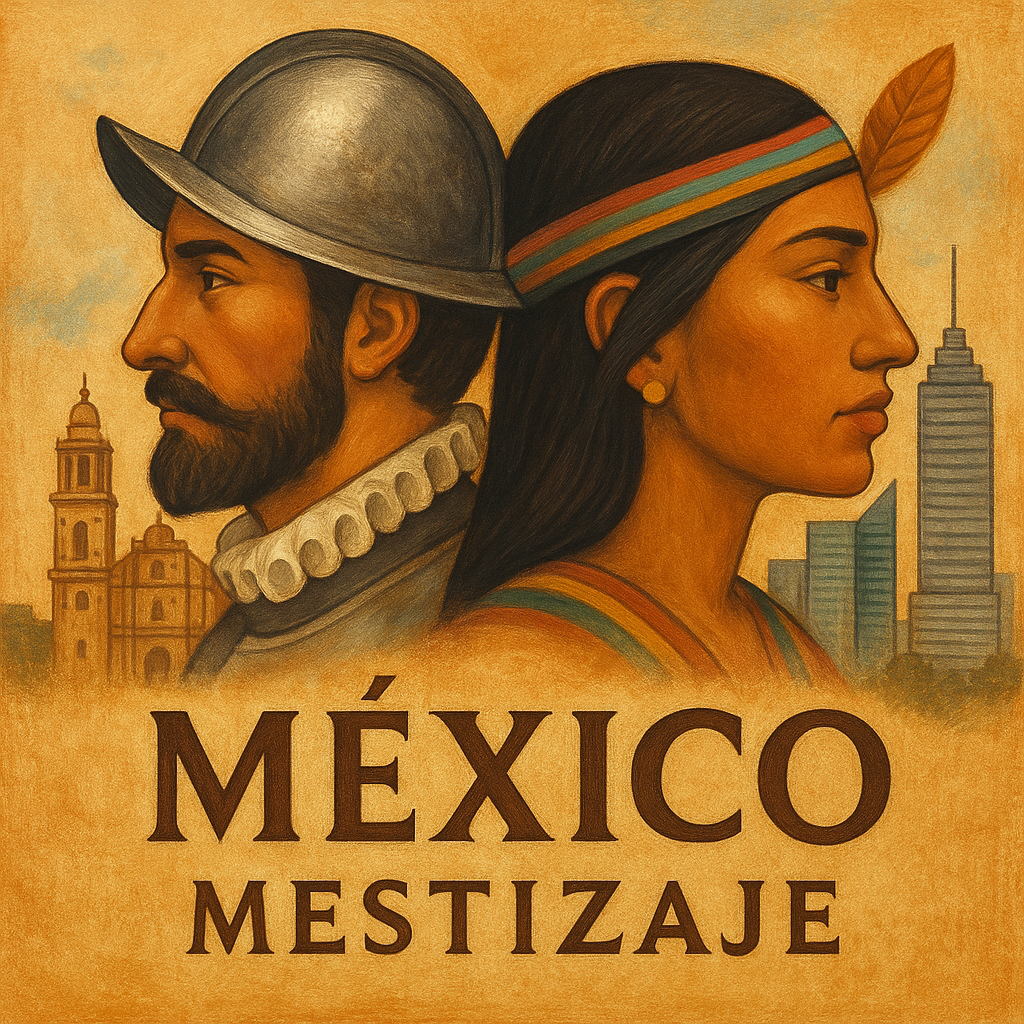Zunzunegui’s History Lesson: Why the Conquest Wasn’t Just Blood and Chains
In a riveting discussion, historian and author Juan Miguel Zunzunegui challenges dominant narratives and invites us to rethink the past, not as a trauma to be mourned, but as a foundational act of fusion, faith, and ultimately, love.-Rafael Benavente

Rethinking the Spanish Conquest: From Trauma to Mestizaje Update
By Rafael Benavente
📚 This article is based on a transcript featuring historian Juan Miguel Zunzunegui, whose insights into [insert subject, e.g., “Latin American political history”] are the foundation of the discussion below. Full credit to him for the original material and historical interpretation.
For centuries, the Spanish conquest of the Americas—especially Mexico—has been viewed through a lens of victimhood, brutality, and cultural destruction. But what if that perspective only tells part of the story? In a riveting discussion, historian and author Juan Miguel Zunzunegui challenges dominant narratives and invites us to rethink the past, not as a trauma to be mourned, but as a foundational act of fusion, faith, and ultimately, love.
The Conquest: Not Angels, Not Demons
Zunzunegui opens by dismantling simplistic portrayals of the Spanish as villains and the indigenous peoples as noble innocents. “There was blood on both sides,” he states. “Humans are flawed—Spanish, Mexica, Tlaxcaltec, or otherwise.” The violence of the conquest was real, but it mirrored the human condition itself.
Cortés, often reduced to a caricature of imperial greed, is reframed as an educated man—versed in Latin, a bachelor of law, and a reader of philosophy. He and his men were seekers of glory, no doubt, but they were also instruments of change, sent not only to conquer but to evangelize, integrate, and reform.
The Role of the Franciscans
One of the most eye-opening revelations is the role played by Franciscan friars. Far from being enablers of oppression, these missionaries were often the first to confront and halt abuses by Spanish conquerors. Their method? Learning indigenous languages and understanding native religions from within.
“If you want to destroy a people, you don’t write their grammar,” Zunzunegui notes. Yet Spanish friars created full grammars of Nahuatl, Quechua, and Mayan languages. This wasn’t conquest by annihilation—it was conquest through dialogue.
Education and Integration
Contrary to myths that the Spanish imposed everything upon a passive native population, the transcript highlights how native education systems—like the Calmecac and Telpochcalli—already existed. However, these were class-based and primarily served elites. In contrast, the Spanish introduced universities (University of Mexico, 1551) and hospitals (Hospital de Jesús, 1524) accessible to broader segments of society, including indigenous people.
Zunzunegui reminds us that a college exclusively for indigenous students, Santiago Tlatelolco, was established early on. Integration, not eradication, was the deeper aim.
A Mestizo Nation Is Born
One of the most poignant parts of the discussion is the idea that from this complex process emerged not a conquered and conqueror class—but a new people altogether. The mestizo.
Imagine, says Zunzunegui, an indigenous woman and a Spanish man looking at their newborn mestizo child and realizing: This child is neither you nor me. This child is both of us. And this has never happened in human history before.
This profound biological and cultural synthesis formed the roots of modern Mexico—and, more broadly, of Spanish-speaking Latin America. “There is no mother Spain,” Zunzunegui declares. “There is a father Spain and a mother America. And the child is Mexico.”
A Critique of Victimhood
Zunzunegui's central thesis isn’t historical revisionism—it’s a call to abandon the paralyzing victim narrative. “If you constantly identify as a victim, you will live like one,” he says. “You surrender your power. You wait for rescue. And that suits political elites just fine.”
In his view, the idea that Mexico was ‘conquered’ and ‘raped’ is a 20th-century invention, a byproduct of post-revolutionary Marxist narratives. Before that, the 19th-century view was more nuanced: indigenous peoples and Spaniards had merged; a new civilization had emerged.
Don’t Blame Cortés for Everything
The blame game, Zunzunegui argues, is a trap. Blaming Cortés, La Malinche, Santa Anna, or even the Spanish Crown for Mexico’s modern-day problems allows people to deflect responsibility. “It’s been 500 years. At some point, we have to take ownership of our reality,” he warns.
Ironically, many who denounce the Spanish still speak Spanish, pray in Catholic churches, and admire colonial architecture. “We curse the Spanish—in Spanish,” he points out.
The True Danger: Historical Manipulation
Governments, left and right, manipulate history to serve their ideologies. The conquest has been rebranded as "invasion," the "Noche Triste" turned into the "Noche Victoriosa," and murals painted with endless depictions of violent conflict.
But this endless focus on trauma and conflict serves those in power more than the people. “Governments feed on division. But division is not what built Mexico—mestizaje is.”
What If the Conquest Was a Love Story?
Instead of viewing history through the lens of bloodshed alone, Zunzunegui dares us to see it as a love story—messy, painful, yet ultimately generative. The child of that union—Mexico—is a complex, beautiful nation whose very existence proves that cultural synthesis can be more powerful than cultural erasure.
Final Thoughts
Juan Miguel Zunzunegui isn’t trying to sanitize history. There was suffering. There were atrocities. But that’s true of all human history. What he offers is a way to reclaim agency, to reframe identity, and to stop living under the shadow of a trauma we never personally experienced.
We are not the defeated. We are the descendants of conquerors and the conquered, of friars and warriors, of gods and myths—and we are still writing our story.
By Rafael Benavente
📝 Acknowledgment: This blog post was adapted from a transcript featuring the work and commentary of historian Juan Miguel Zunzunegui. His analysis and storytelling provided the primary framework for this article.
